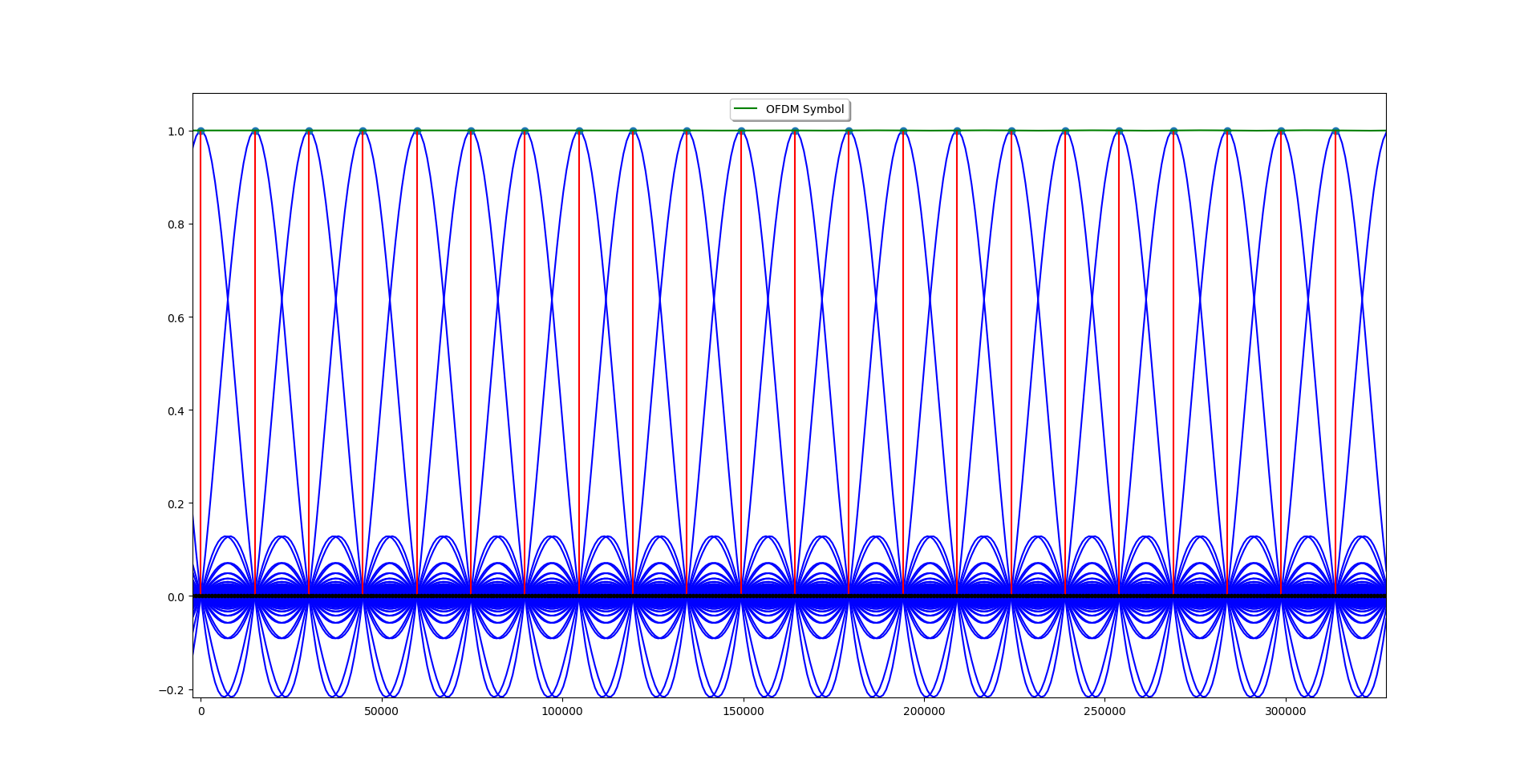The answer to your question lies in the following -
- We have QAM Complex Symbols that is required to be communicated over a certain bandwidth.
- We have decided that we would be using OFDM for this purpose i.e. we want to divide the available bandwidth into $N$ equally-spaced equal-width parallel non-interfering sub-channels and load each sub-channel with one QAM symbol.
- How can we achieve that ?
We have a very popular non-interfering pulse shape that we can use here: Sinc pulse. Remember that this has to be in frequency-domain, since the sub-channels we want is in frequency domain.
So, in frequency-domain our transmit signal will be made up of shifted Sinc-pulses such that the zero-crossing of all Sinc pulses are coinciding. In frequency-domain, shift corresponds to modulation in time-domain. So, sinc-pulse at a particular frequency is achieved by modulating a rect-window at that frequency. Mathematically, this means:
$k^{th}$ sub-channel at frequency $k\Delta f$ : $e^{j\frac{2\pi k\Delta f n}{F_s}}.rect(n), n=-\frac{N}{2},...,0,1,2,...,\frac{N-1}{2}$.
Multiplication in time-domain becomes convolution in frequency domain and hence, Fourier transform of rect function which is Sinc-pulse gets shifted to $k\Delta f$ frequency.

Now, if you look closely, $k^{th}$ sub-channel is actually $k^{th}$ Fourier Basis. So, basically, if you take $N$ QAM symbols and then take $IDFT$ of this $N$ length complex vector, you will achieve time-domain representation of $N$ sub-channels and each loaded with corresponding QAM symbol.
This resulting time-domain complex samples have to be then treated as samples at interpolating frequency $F_s = N\Delta f$
That is why we take $IDFT$ at transmitter and then to demodulate we take $DFT$ at the receiver.

